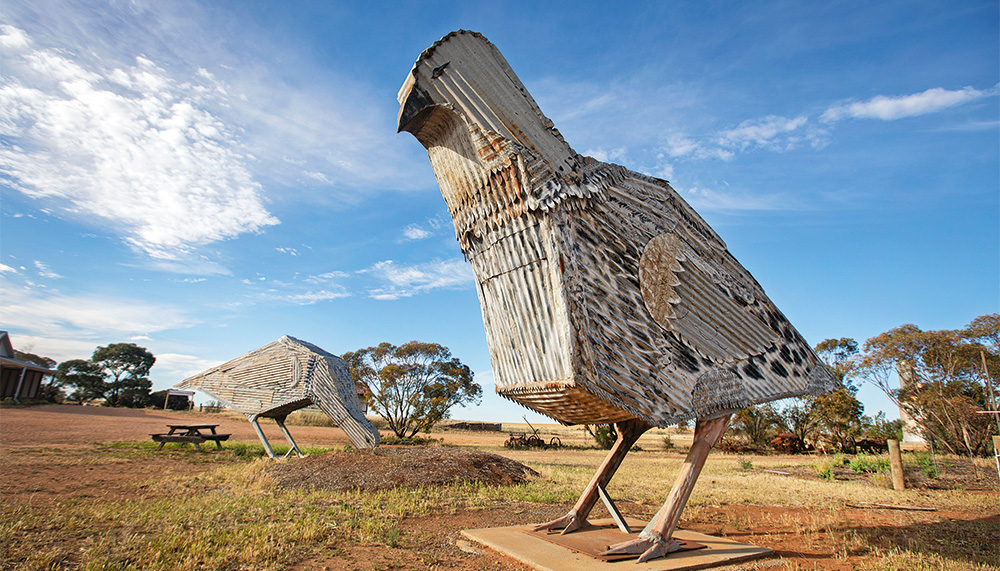A nature tour of the Victorian Mallee reveals a landscape alive with a rich diversity of flora and fauna.
Story + Photos Nathan Dyer
Mid-morning and a cool breeze sweeps across a golden wheat paddock in north-western Victoria. Bumping along a narrow dirt track beside the swaying crop, Michael Gooch and Louise Nicholas are taking guests on a tour of their private patch of Mallee scrub. Michael pulls the
LandCruiser to a stop and points to the wheat field. “There, just inside the fence,” he says in an excited whisper. “See it?”
At first it’s hard to see. Then, slowly, a small, mottled brown and grey shape materialises – a malleefowl. The rare bird, listed as endangered in Victoria and vulnerable nationally, struts through the crop, stopping every few steps to reach up and pluck a plump head of wheat from its stalk, then shake it to thresh the grains from their husks, pecks them off the ground and repeats. Soon the bird is so close its scratching can be heard as it moves through the paddock.
After five minutes, the malleefowl wanders from the field and into the nearby bush, its camouflage blending perfectly with the greys, browns and greens of the scrub. The guests start breathing again.
Both heavily involved with the Victorian Malleefowl Recovery Group, Michael and Louise talk of the elusive birds with a deep passion. Louise says there’s always a strong reaction when people catch their first glimpse. “With parrots or other rare birds its often a more vocal and exuberant response, but with malleefowl it’s more like a quiet reverence,” she says.
Grinning from ear to ear, Michael starts up the motor and continues the tour and Louise points out native flora along the track – bull oak, sugarwood, saltbush, emu bush (“the parrots and honeyeaters love them”) and native pine. “That’s an umbrella wattle,” she says, pointing to a small shrub beside the track. “They’re a threatened species, so it’s really special to have them here.”
For many, mention of the Mallee conjures images of big red dust storms and desolate paddocks full of monstrous Mallee roots. But Michael says the region is rich in biodiversity. “A lot of people have an idea of what the Mallee is, but then we take them out and they see big grassy areas, stands of bull oak and native pine, and, depending on what time of year, wildflowers. It’s one of those places that really draws you in, and it’s just so different to anywhere else in Victoria.”
This story excerpt is from Issue #142
Outback Magazine: April/May 2022










